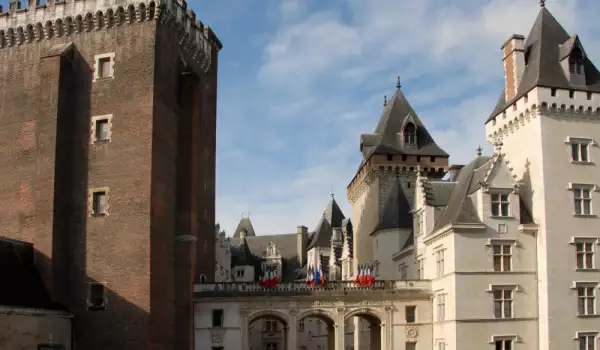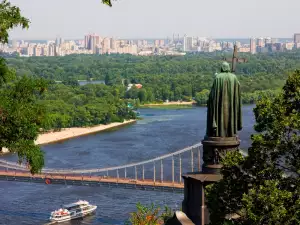Pau

In the French city Pau live more than 85 000 people, it offers beautiful views and it lies located at the north end of the Pyrenees. It is the capital of the department Pyrénées-Atlantiques, it has acted as the capital of the region Béarn, but then the privilege was revoked.
The town is considered somewhat of a university town because of the established in 1972 Pau University, which attracts many young people. Pau town is best known for its impressive castle Pau, which was built in the eleventh century, and indeed the name of the castle became the name of the town, which later rose around it. In the twelfth century to the castle were attached three watchtowers at the command of Gaston IV of Béarn.
But the event which made the castle famous throughout France and is still associated with its name, the birth of King Henry the Fourth in its territory. His mother, Jeanne d'Albret specially chose the place of birth of her son. Immediately after the birth of Henry, the King's lips were soaked with local wine and rubbed with garlic to protect him from all evil.
When he became King and united France with Béarn, he reassured the nation that he does not give Béarn to France, but rather giving France to Béarn. King Henry the Fourth lived in the castle only during the earliest years of his childhood, but the castle is forever associated with his name.
This King is known as a good ruler and an insatiable lover. By order of the king a recipe that is a favorite of all Frenchmen was created - the famous poule au pot - chicken stuffed with vegetables. The idea of the king was that his kingdom was to be so rich that everyone in it can afford to eat chicken at least once a week.
Today the castle houses a national museum, which presents works of French art, starting from the time of Henry the Fourth. In the museum can be seen a cradle made from shell of a turtle, in which the future King Henry the Fourth slept as a baby. In the castle is kept a large collection of antique tapestries that represent the era of the French kings in the period from the sixteenth to the nineteenth century. According to many famous French writers, it is one the most beautiful places on earth.
In 1464, the town became the capital of Béarn. In 1188 the castle became a real fun place for the aristocracy, under Gaston the Sixth. Gaston Fébus, was known as Gaston Tenth of Béarn added a brick tower, which is decorated with an inscription in Latin.
Napoleon III added, beautiful elements to the Castle by turning it into a building worthy of the era of the Belle Époque. Swedish King Charles XIV was also born in the castle of Pau.
Just after the assassination of Abraham Lincoln, his wife Mary Todd Lincoln remains in the city until the end of her life.
It is unclear exactly where the name Pau comes from. In local Béarn dialec, thet word means garden, as well as peacock. The name of the town is mentioned for the first time in writing in the twelfth century.
The coat of arms contains the Latin phrase "Urbis palladium et gentis" - guardians of the city and the nation. On top of the emblem are inscribed the initials of King Henry the Fourth. These initials were added in 1829, during the rule of Charles X, in honor of the late Henry the Fourth. The emblem of the city is decorated with two cows that were a symbol of medieval rulers of Béarn. Over the two cows, whose heads have crowns, stands a beautiful peacock.
The top of the crest, just between the initials of Henry the Fourth, is a royal crown and shell of a turtle. The shell symbolizes the cradle made of a turtle shell in which the King slept as a baby. The entire coat is like a strange puzzle that is difficult to solve.
Royal Park is one of the most beautiful places in the city of Pau. It is situated on the edge of town and has a huge green area. For many generations the park is a place for meetings and recreation and offers a wonderful opportunity to spend time with family. The park is extremely loved by residents of the Pau, as due to its location in the outskirts, it offers magnificent views of the Pyrenees.
Bernadotte Museum is an important landmark. This is the building in which Jean-Baptiste Bernadotte was born. He became King of Norway, while being King of Sweden. The museum has an impressive collection of artifacts, including the flags of different nations.
The covered market in town is one of the best markets in the southwestern part of the country. Here you can find the freshest goods that local farmers sell. Furthermore, the covered food market brings to the attention of tourists and locals many different clothes and accessories.








